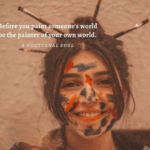
Unrealistic Beauty Standards
Many Disney princesses embody unattainable beauty standards, showcasing unrealistic body proportions, flawless skin, and perfectly coiffed hair. These portrayals can contribute to body dissatisfaction, low self-esteem, and negative body image in young viewers.
.

Problematic Relationships and Love
Disney princess movies often feature rushed and unhealthy relationships, with princesses falling deeply in love with princes they’ve known for mere minutes. These depictions can perpetuate unrealistic expectations about romance and relationships.

Stereotyping and Cultural Appropriation
Some Disney princess movies rely on stereotypes and cultural appropriation, reducing complex cultures to simplistic and inaccurate representations. For example, Aladdin has been criticized for its portrayal of Middle Eastern culture, while Pocahontas has faced accusations of cultural insensitivity and historical inaccuracies.
Lack of Agency and Autonomy
Many Disney princesses are depicted as passive characters, relying on others to rescue them from difficult situations. This lack of agency and autonomy can reinforce negative stereotypes about women’s roles and abilities.

Darker Origins
Some Disney princess stories are based on darker, more violent fairy tales. For instance, the original tale of Cinderella features stepsisters mutilating their feet to fit into the glass slipper, while Sleeping Beauty involves a princess under a sleeping curse that can only be broken by true love’s kiss—or, in some versions, by the birth of her child.







